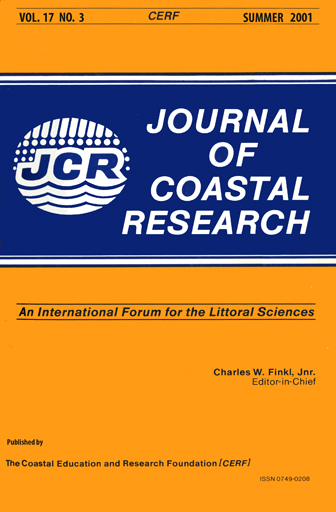Tecolutla and Nautla Deltas, Veracruz, Mexico: Texture to Evaluate Sediment Entrapment on Deltaic Plains and Bypassing onto the Gulf of Mexico Margin
Keywords:
Deltas, Gulf of Mexico, lower estuary, mangrove, overbank deposition, selective bypassing, sediment entrapment, size analyses, Veracruz.Abstract
This study uses grain-size distributions to contrast sediment transport processes in the Tecolutla and Nautla deltas on the high-energy Veracruz coastal margin, southwestern Gulf of Mexico. Both tropical deltas formed at mouths of short, seasonal high-flood discharge rivers that carry large volcaniclastic loads down steep mountain slopes directly to the coast. Baseline studies of deltaic sediments are needed to help develop protection measures for the increasing delta populations endangered by devastating floods. Eleven environments in each delta are distinguished on the basis of mean size, standard deviation and skewness in surficial sediment samples. These textural parameters are used to interpret transport processes that prevail in the environments of the two deltas. The Tecolutla system discharges more water and carries a greater sediment load than the Nautla. The Tecolutla loses a greater proportion of coarser fractions by overbank transport on its natural levees and flood-plain, and it also traps more finer-grained fractions in its larger marshes, mangroves and upper estuary. Consequently, grains reaching the Tecolutla's lower estuary are of finer mean size and better sorted than those reaching the Nautla's lower estuary. Moreover, a larger proportion of the Tecoluta's sediment load bypasses the lower estuary and is released seaward beyond the river mouth. This conclusion is independently confirmed by the delta's prograding, gentle cuspate form and higher proportions of f1uvioclastic light and volcanic mineral components traced from its lower estuary to nearshore settings. In contrast with the Tecolutla, textural evidence suggests erosion and reworking from marine environments and accretion onto the Nautla coast and lower estuary by wave-driven currents. Corroborating evidence is the Nautla's truncated coastal configuration and, in its lower estuary, a masking of the river's volcanic and light minerals by locally concentrated heavy minerals and carbonates.Downloads
Published
2001-07-27
Issue
Section
Articles


